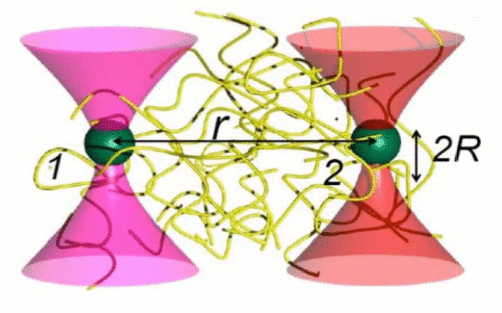
Research Interests
 |
Research Interests
|
|
See our recent research highlightsSoft Matter and Complex FluidsThe physics of soft materials involves, (but is not restricted to) the study of emulsions, gels, foams, colloids, synthetic and bio-polymer melts and solutions, liquid crystals and other such systems. They are characterised by geometric structures on a mesoscopic scale several orders of magnitude bigger than the molecular scale but well below the macroscopic (human) scale.
Over the last few decades, we have come to realise that by understanding this structure (which can be described using simple geometrical models with a small number of physical parameters) it is possible to come up with a set of general principles, to understand many features of their macroscopic behaviour. It turns out that many microscopic details like detailed chemical structure can simply be used to determine the specific values of the physical parameters of the coarse-grained mesoscopic models. Of course this is not the whole story, a current active area of research is the study of soft systems to find out exactly those macroscopic properties cannot be separated from the microscopic details. The separation of this mesoscopic scale from the macroscopic allows one to use the powerful techniques of statistical mechanics. The study of complex fluids is an interdisciplinary field with many fruitful interactions between physicists, chemists, and engineers and mathematicians.
Biological Physics
Fluorescence images of mouse fibroblasts showing microtubule and actin cytoskeleton by Jan Schmoranzer (Columbia)
The sub-cellular world has many components in common with soft condensed matter systems (polymers, amphiphilic molecules, colloids, and liquid crystals). But (and this is what makes it so fascinating) it has novel properties which are not present in traditional complex fluids. These new features include a number of specific interacting elements present that are crucial for biological function. The addition of these elements which can be both active and passive, lead to a highly non-equilibrium system with a rich spectrum of behaviours. A new generation of experiments using physical probes are giving us an unprecedented view of this non-equilibrium system at work. The search is on for an as yet undiscovered hierarchy of organisational principles which will enable us to understand these exceedingly complex systems!
|
| Research | Teaching | Links |